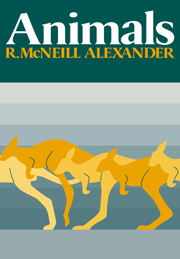Book contents
- Frontmatter
- Contents
- Preface
- 1 Introduction
- 2 Single-celled animals
- 3 Animals with mesogloea
- 4 Flatworms
- 5 Rotifers and roundworms
- 6 Molluscs
- 7 Segmented animals
- 8 Crustaceans
- 9 Insects
- 10 Bryozoans and brachiopods
- 11 Starfish and sea urchins
- 12 Primitive chordates
- 13 Sharks and some other fishes
- 14 Teleosts and their relatives
- 15 Lungfishes and amphibians
- 16 Reptiles
- 17 Birds
- 18 Mammals and their relatives
- Index
1 - Introduction
Published online by Cambridge University Press: 26 October 2009
- Frontmatter
- Contents
- Preface
- 1 Introduction
- 2 Single-celled animals
- 3 Animals with mesogloea
- 4 Flatworms
- 5 Rotifers and roundworms
- 6 Molluscs
- 7 Segmented animals
- 8 Crustaceans
- 9 Insects
- 10 Bryozoans and brachiopods
- 11 Starfish and sea urchins
- 12 Primitive chordates
- 13 Sharks and some other fishes
- 14 Teleosts and their relatives
- 15 Lungfishes and amphibians
- 16 Reptiles
- 17 Birds
- 18 Mammals and their relatives
- Index
Summary
Subsequent chapters describe a great many observations on animals, some of them anatomical and some physiological. This chapter explains some of the techniques used by zoologists to make these observations. It also explains how zoologists classify animals.
Many people seem still to think of a zoologist as someone with a microscope, a scalpel and a butterfly net. These are still important tools but a modern zoological laboratory requires a far more varied (and far more expensive) range of equipment. Some of the most important tools which will be mentioned repeatedly in later chapters are described in this one.
Microscopy
It is convenient to start with the conventional light microscope (Fig. 1.1a). Light from a lamp passes through a condenser lens which brings it to a focus on the specimen S which is to be examined. The light travels on through the objective lens which forms an enlarged image of the specimen at I1. This is viewed through an eyepiece used as a magnifying glass so that a greatly enlarged virtual image is seen at I2. Each of the lenses shown in this simple diagram is multiple in real microscopes, especially the objective, which may consist of as many as 14 lenses. This complexity is necessary in good microscopes to reduce to an acceptable level the distortions and other image faults which are known as aberrations.
Microscrope technology has long been at the state at which the capacity of the best microscopes to reveal fine detail is limited by the properties of light rather than by any imperfections of design.
- Type
- Chapter
- Information
- Animals , pp. 1 - 25Publisher: Cambridge University PressPrint publication year: 1990
- 5
- Cited by

